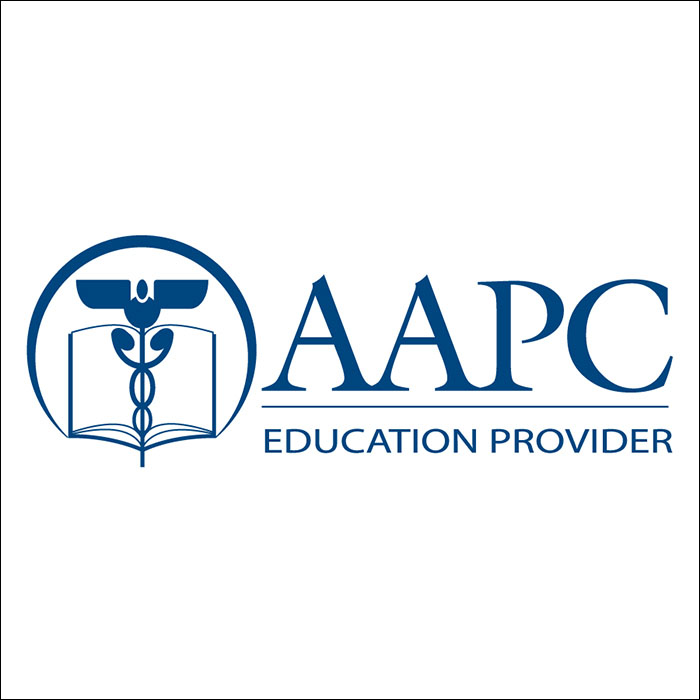
This course is accredited by AAPC
Find Out MorePrepare to become a certified medical coding professional with TU's live, instructor-led Certified Professional Medical Coding course.
Towson University’s Certified Professional Medical Coding Course prepares you for a rewarding career in the medical field. Learn the application of CPT® procedure codes, HCPCS Level II supply codes, and ICD-10-CM diagnosis codes—all of which medical providers use to submit claims to payers. Upon completion, you will be prepared to sit for the American Academy of Professional Coders (AAPC) Certified Professional Coder (CPC®) exam.
Course Format: Live, instructor-led meets online via Zoom
Total Hours: 90 hours
Tuition: $3,999
Materials: Tuition includes materials, books, AAPC student membership, and CPC® exam.
This course is WIOA approved and is on the Maryland Eligible Training Provider List (ETPL).
| Dates | Schedule | Register |
|---|---|---|
| January 27–May 7, 2026 | Tuesday & Thursday, 6–9 p.m. | Register |
| July 14–October 22, 2026 | Tuesday & Thursday, 6–9 p.m. | Register |
| January 26–May 7, 2027 | Tuesday & Thursday, 6–9 p.m. | Register |

Medical coding careers are expected to increase by 15% in the coming years.
Read More
Adrienne Blackstone is a dedicated, results-driven professional with 20+ years of experience in healthcare administration.
Learn More
Learn about job benefits, responsibilities, and salary information in this infographic.
View infographic (PDF)Medical coders help translate and transcribe important health documents for record-keeping. A large portion of their job is managing and protecting patient data, as well as ensuring that healthcare providers are paid for their services.
Medical coders work in many types of health care facilities such as, doctor's offices, surgery centers, hospitals and health care systems.
Becoming certified shows your that you have obtained the proper training and skillset needed to be a medical coder.
According to the BLS, the job outlook for a medical coder is expected to grow by 8% (faster than average) between 2022 and 2032, with 194,300 job opening annually.
Medical coding is the process of identifying diagnoses, medical tests, treatments, and procedures found in clinical documentation and then copying this patient data into standardized codes to bill insurance payers for physician reimbursement.
The Certified Professional Coder (CPC) course a step to obtain your coding certification—This certification is known as the gold standard for physician-based medical coding. By passing the CPC exam and earning the right to append the CPC to your name, you will become a healthcare professional recognized for professional-fee medical coding.
This course integrates all elements of the coding process, including:
Below are the topics that will assist you in earning your medical coder certification.
Module 1. Business of Medicine
Module 2. Medical Terminology
Module 3. Anatomy Review
Module 4. Introduction to ICD-10-CM and its Guidelines
Module 5. Intro to CPT, Surgery Guidelines, HCPCS Level II, and Modifiers
Module 6. Intro to Surgery, Global Period, How to read an Operative report
Module 7. Integumentary System
Module 8. Musculoskeletal System
Module 9. Respiratory, Hemic and Lymphatic Systems; Mediastinum and Diaphragm
Module 10. Cardiovascular
Module 11. Digestive System
Module 12. Eye and Ear Surgery Systems
Module 13. Endocrine and Nervous
Module 14. Urinary and Male GU System
Module 15. Female GU System and Maternity
Module 16. Radiology
Module 17. Anesthesia
Module 18. Pathology and Laboratory
It’s important you know anatomy and medical terminology to be a successful certified medical coder. To ensure your success, Medical Terminology and Anatomy and Physiology fundamentals courses can be purchased for a nominal cost in addition to course tuition. These courses are online and self-paced.
This course includes an electronic exam voucher for AAPC's Certified Professional
Coder (CPC®) certification exam. This voucher also includes a retake option for those
who do not pass the exam on their first attempt.
The AAPC CPC exam will be administered electronically. Students will have the choice
of either taking their exam at home with a live remote proctor (LRP) or at a Meazure
Learning-approved testing center.
AAPC voucher and membership are issued within one week of confirming successful course
completion. Students will schedule and take the CPC exam on their schedule via their
AAPC member account. Contact your Student Success Manager via email at tmunroe AT_TOWSON if you have further questions about the AAPC voucher or the exam process.
Learn more about the Certified Professional Coder (CPC®) Certification exam.
Adrienne Blackstone is a dedicated, insightful, and results-driven healthcare professional with 20+ years of experience in healthcare administration and revenue cycle management. She is skilled in problem-solving, practice management, compliance, medical coding education, and developing and implementing medical billing processes in both private practices and academic practices.
Hardware Requirements
Software Requirements
Other
*Note: WIOA and other tuition assistance programs are not eligible for course discounts.